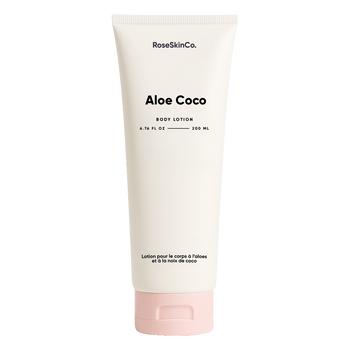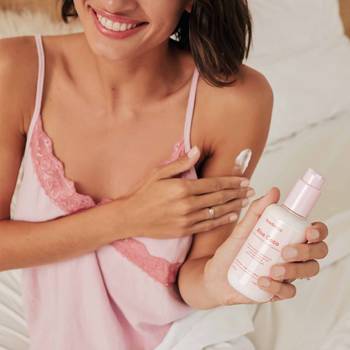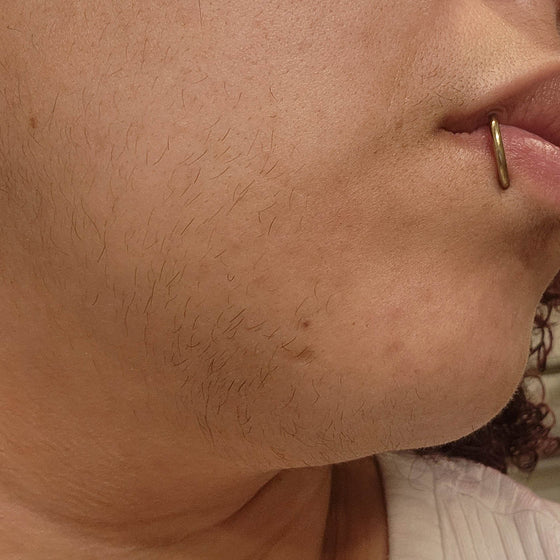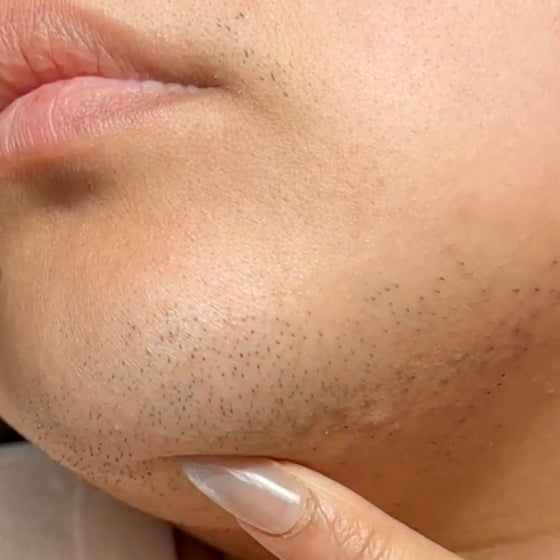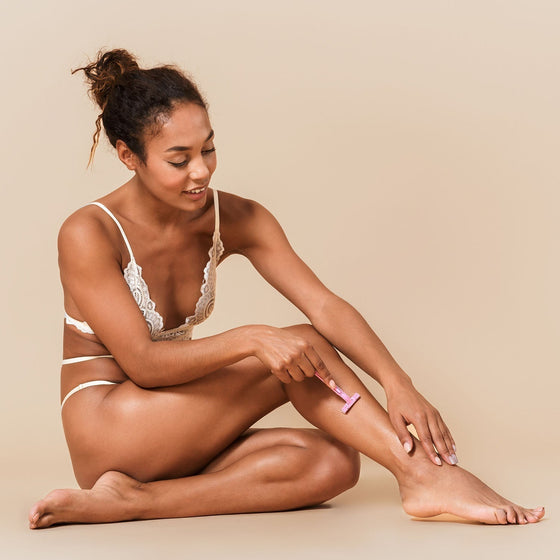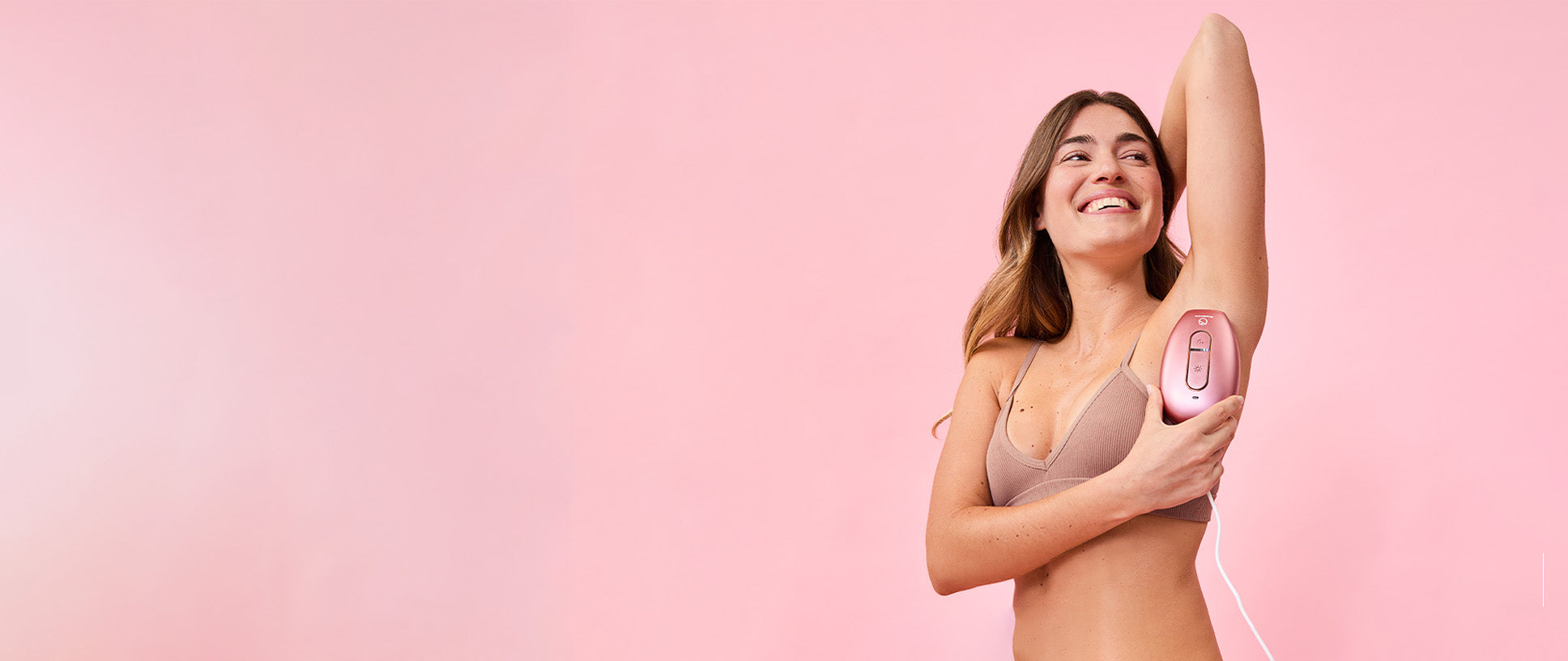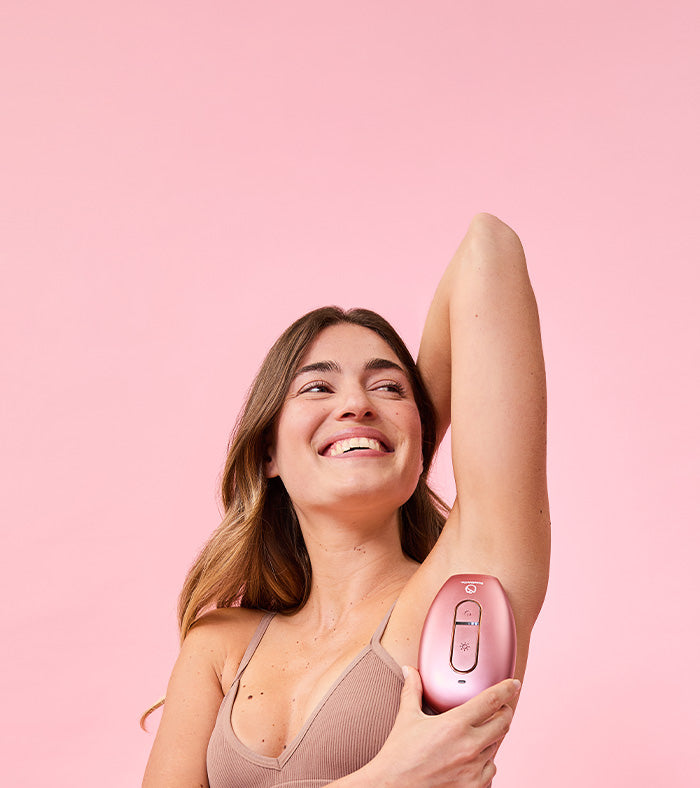Shaving is annoying enough already. But to spend all that precious shower time contorting yourself in weird angles, just to be rewarded with…… ugly, itchy razor bumps all over your body?! The worst. Unforgivable. Cue the sad violin.
You want that smooth just-shaved feeling… but shaving the prickles often just leaves you with bumps instead. At best, it’s lowkey not cute – at worst, it’s seriously painful.
BUT – good news – those razor bumps are 100% preventable. With the right skin prep, shaving technique, and aftercare, you can minimize razor bumps… and other hair removal methods can eliminate the possibility of razor bumps altogether. (For good!)
Take a good look at your razor bumps one last time: you’re about to learn how to get smooth skin that’s completely razor-bump-free.
What Causes Razor Bumps?
Not to be super obvious, but uhh… razors. Specifically dull, multi-blade razors.
Razor bumps are the same thing as ingrown hairs. They occur when shaved hair starts to grow back. Hair is typically cut at a sharp angle when shaving – it grows back at that same sharp angle as well, sometimes getting trapped underneath the skin and/or piercing it in the process. This can cause razor bumps (also known as strawberry legs) that look and feel a bit like acne, often associated with pain, redness, and inflammation.
They’re most common on the face for men and near the bikini area or legs for women. People with coarse, curly hair may get razor bumps more often.
Related:
Say Goodbye to Razor Bumps on Your Bikini Line
How to Treat Razor Burn on Pubic Area
Shaving Techniques to Avoid Razor Bumps
Here are a few of our top tips to avoid razor bumps when shaving:
-
Use shaving gel. Shaving gel or cream creates a layer of protection between the skin and the razor blade. This can reduce friction, irritation, and razor bumps.
-
Try shaving with the grain. it may be different from how you learned, but experts recommend shaving with the grain instead of against it, especially if you have curly or coarse hair. Shaving against the grain provides a closer shave, but it’s also more likely to cause ingrown hairs – it shaves hair just beneath the skin, giving it a chance to grow back wonky underneath the skin. Shaving with the grain cuts hairs at the skin, reducing the chance of ingrown hairs.
-
Shave less often. Shaving frequently can irritate your skin and make it difficult for razor bumps to heal. Allow your skin to recover for a few days between shaves.
-
Shave when your hair is soft. Wait until the end of your shower to shave, when your hairs are loose and less likely to curve back into your skin.
-
Use a sharp razor. You probably already know that shaving with a dull razor is a no-no… but you may not know why. Shaving with a dull razor can cut hair unevenly, which can make it more likely for hairs to fold back and grow into the skin.
-
Use a single-blade razor. Single-blade razors cut hair at the skin, rather than just under the skin, effectively preventing ingrown hairs. If you can’t sacrifice a close shave, opt for an electric razor like the 4D Shaver that offers an even, razor-bump-free shave.
Related:
How to Choose a Razor When Your Skin is Extremely Sensitive
Best Types of Skincare Products to Use
We’ve said it before and we’ll say it again: hair removal is skincare. It works best when it’s part of a routine. Wash your skin with a non-comedogenic cleanser. Exfoliate your skin, either immediately before or the day before you shave. Use a moisturizing shaving cream or gel when shaving. Follow with a gentle body lotion immediately after.
Look for gentle, calming, soothing ingredients, like aloe, coconut oil, shea butter, and chamomile. Avoid chemicals that can cause skin irritation and dryness, like artificial fragrances, sulfates, and parabens.
For sensitive skin:
Stay away from products with artificial fragrances, and exfoliate with a gentle physical exfoliant like the Glow Glove 24-48 hours before shaving.
Whenever you introduce a new skincare product into your hair removal routine, do a patch test first on a small area. If your skin doesn’t react adversely after 24 hours, you should be good to go.
For bikini area:
Look for gentle formulas formulated for the bikini area – you don’t want to mess up your pH levels or anything else down there. Use a single-blade razor for ingrown pubic hair prevention.
Related:
Bikini Line Razor Bump Remedy: Aloe Vera
For coarse hair:
Exfoliate before shaving, using a gentle physical exfoliant, body scrub, or chemical exfoliant. Always use shaving cream or shaving gel, and always shave at the end of your shower. If you’re shaving outside the shower, hold a warm, damp washcloth to the area before you shave.
Post-Shave Care
Razor bumps typically don’t pop up as you’re shaving – it’s that time right after you shave that you need to worry about. Here are some aftercare tips to help prevent razor bumps:
-
Rinse all shaving cream after you’re finished shaving.
-
Apply lotion immediately after shaving to moisturize your skin keep it as smooth as possible for as long as possible.
-
After shaving, wear breathable fabrics like 100% cotton, bamboo, or linen. Wear loose-fitting clothes that minimize friction and irritation. Avoid synthetic fabrics.
-
Continue to exfoliate 1-2x/week, or 24-48 hours before shaving.
Long-Term Prevention
The #1, surefire, no-fail way to get rid of razor bumps for good? …Get rid of the razor. (No razor, no razor bumps. Groundbreaking.)
That doesn’t mean you have to just stay hairy – but opting for a hair removal method that removes hair follicles at the root, or that stops hair from growing back permanently, effectively prevents razor bumps. You could switch to waxing or epilating (both of which remove hair follicles at the root every 2-4 weeks), or a permanent hair removal method like laser or IPL.
At-home IPL devices like Lumi target hair follicles and destroy them with broad-spectrum light pulses. Lumi is pain-free, easy to use, FDA-cleared for safe, effective, permanent at-home hair removal in 6-12 weeks. It works just about anywhere, including for bikini hair removal and facial hair removal.
You’ll shave before each treatment, so all those new tips you just picked up about preventing razor bumps when shaving will still come in handy! But hair will grow back more sparse with each treatment until, eventually, there’s not a body hair (or razor bump) in sight.


.png?v=1727993165793&options=w_350)
.jpg?v=1724421708187&options=w_350)
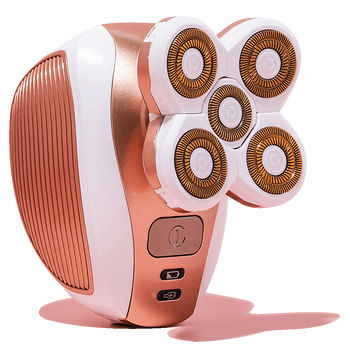
.jpg?v=1724421459873&options=w_350)
.png?v=1727993475896&options=w_350)
.jpg?v=1724421546889&options=w_350)
